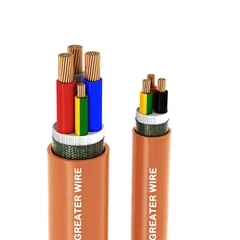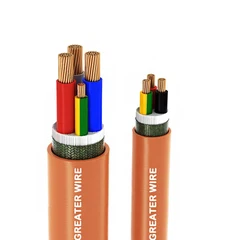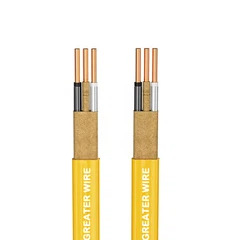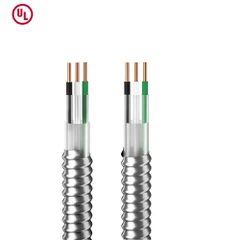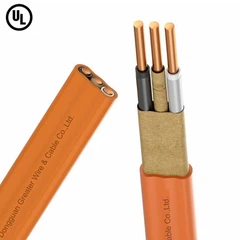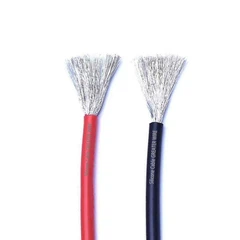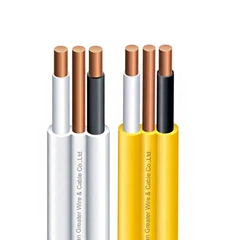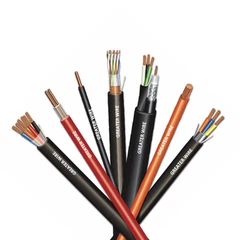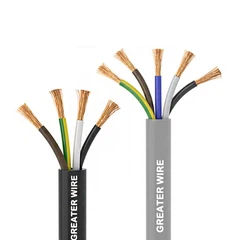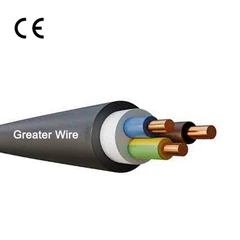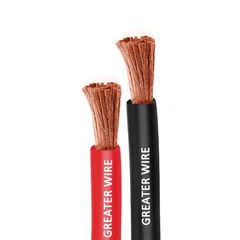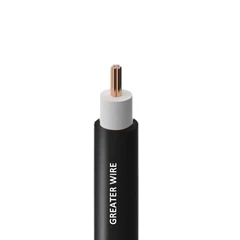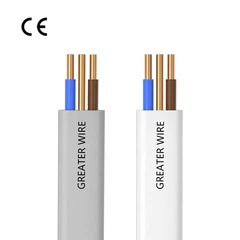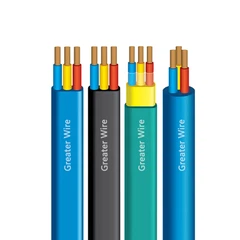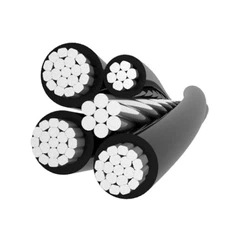In modern industrial, commercial, and residential applications, cables play a crucial role in the safe and efficient operation of electrical systems. One such cable that has gained widespread use is the orange circular cable. This type of cable is often chosen for its high visibility, flexibility, and durability. However, a key concern when selecting any electrical cable is its ability to resist fire. Given the potentially hazardous nature of electrical systems, ensuring that cables have fire-resistant properties is essential for safety.
This article delves into the fire-resistant properties of orange circular cables, exploring their construction, materials, and fire safety characteristics. It also covers the standards and regulations governing fire resistance in cables and provides guidance on selecting the right type of cable for applications where fire resistance is critical.
What is an Orange Circular Cable?
An orange circular cable typically consists of several key components that are integral to its function and performance. These components are as follows:
Conductors: These are the core elements of the cable and are responsible for carrying electrical current or signals. Conductors are often made from materials such as copper or aluminum due to their excellent conductivity.
Insulation: Surrounding each conductor, the insulation prevents electrical shorts, leakage, and protects against external elements. The insulation can be made of various materials, including PVC (Polyvinyl Chloride), rubber, and Teflon, depending on the specific needs of the application.
Outer Sheath: The outer sheath is the protective layer that surrounds the conductors and insulation. This sheath is often made of durable materials designed to withstand mechanical stress, moisture, chemicals, and extreme temperatures. The outer sheath also serves to provide visibility, which is why orange is a popular color choice.
Orange circular cables are typically used in environments where high visibility is important, such as construction sites, industrial plants, or power transmission networks. They are ideal for situations that require cable protection from environmental factors, including UV radiation, moisture, and physical damage. However, when it comes to fire safety, it is essential to understand the materials and standards involved to determine whether the cable has fire-resistant properties.
Fire-Resistant Properties of Cables
When discussing fire resistance in cables, it is essential to understand the concept of fire-resistant and fire-retardant properties. These terms refer to how a cable responds to fire exposure and how well it can prevent or slow down the spread of flames.
Fire-Resistant Cables: A fire-resistant cable is specifically designed to continue functioning during a fire. It maintains its integrity, mechanical and electrical properties even when exposed to high temperatures or flames for a certain period. These cables are often used in critical systems, such as emergency lighting, alarm systems, and fire alarms, where it is necessary to ensure that the cable continues to operate even during a fire.
Fire-Retardant Cables: On the other hand, fire-retardant cables are designed to resist the spread of flames. These cables do not continue to operate once the fire has started, but they are constructed to prevent flames from traveling along the length of the cable, thereby slowing the fire's spread. This can be crucial in reducing the overall damage caused by fires in buildings, industrial complexes, and other environments.
Both fire-resistant and fire-retardant properties are important, and cables may be rated for one or both of these characteristics depending on the application.
Key Materials That Influence Fire Resistance
The fire resistance of an orange circular cable is primarily influenced by the materials used for both the insulation and the outer sheath. Let's explore these materials and their role in the cable's fire resistance:
PVC (Polyvinyl Chloride) Insulation: PVC is one of the most common materials used for cable insulation and outer sheathing. While PVC-based cables are often chosen for their durability and cost-effectiveness, they are not inherently fire-resistant. In fact, PVC is known to emit toxic gases when exposed to high heat or flames. However, cables that use PVC insulation can be manufactured with fire-retardant additives that improve their resistance to flames.
Fire-Resistant PVC: Some PVC cables are modified with fire-resistant chemicals, allowing the insulation to resist ignition and slow down the spread of fire. These modified PVC cables can continue functioning under fire exposure for a limited period, making them suitable for less critical applications.
LSZH (Low Smoke Zero Halogen) Materials: Cables that require high fire resistance often use LSZH materials for insulation and sheathing. These materials are specifically designed to emit little to no smoke when exposed to fire and are free of halogens, which are harmful chemicals often released during combustion. LSZH cables are an excellent choice for environments that need cables with low toxicity and minimal smoke, such as underground installations, public buildings, or areas where people might be trapped during a fire.
Rubber Insulation: Rubber insulation is another material used in some orange circular cables. Certain types of rubber, such as ethylene propylene diene monomer (EPDM), are naturally resistant to heat and can withstand higher temperatures compared to PVC. However, even rubber-insulated cables may require specific treatments or enhancements to improve their fire resistance for critical applications. Silicone rubber, for example, is often used in high-temperature environments and is more fire-resistant than standard rubber.
Metal Sheaths: In certain cases, orange circular cables may feature metallic sheaths, such as aluminum or steel, to provide additional protection against physical damage and fire hazards. These sheaths can act as a barrier to fire, reducing the chances of a fire spreading through the cable.
Fire Resistance Standards and Regulations
Cables are subject to various national and international standards that define their performance in the event of a fire. Several organizations provide guidelines and certifications for fire-resistant cables, ensuring that these products meet the safety requirements for use in critical infrastructure.
IEC (International Electrotechnical Commission) Standards: The IEC has established various standards for cables used in fire scenarios, such as IEC 60331, which defines the requirements for cables to continue functioning during a fire. This standard specifies the temperature and duration that a cable should withstand while maintaining its electrical integrity.
UL (Underwriters Laboratories) Standards: The UL 44 standard, primarily used in the United States, provides safety guidelines for the construction and fire resistance of cables. It covers a wide range of cable types and provides classifications based on their resistance to fire and heat exposure. UL 1581 is another standard relevant to fire-resistant cables, specifically designed for wire and cable testing.
BS (British Standard) 6387: The BS 6387 standard, adopted in the UK, is often used to evaluate the performance of cables in fire situations. This standard categorizes cables into different classes, including the CWZ classification, which is one of the most stringent. Cables meeting this classification can function for up to three hours at high temperatures, making them suitable for critical systems.
NFPA (National Fire Protection Association): The NFPA 70 code (also known as the National Electrical Code, or NEC) provides guidelines for fire-resistant wiring and cabling in buildings and installations. It includes fire ratings and specifications for cables used in fire-prone environments.
Fire-Resistant Properties in Orange Circular Cables
While many orange circular cables are designed to be durable, flexible, and resistant to environmental hazards, they may not always be fire-resistant by default. The fire resistance of a specific cable depends on the materials used in its construction and any additional treatments or enhancements provided by the manufacturer.
For most orange circular cables, their fire resistance depends largely on:
The insulation material (whether it is PVC, rubber, or LSZH).
The outer sheath (whether it is made of PVC, rubber, or metal, and whether it has been treated for fire resistance).
Whether the cable has been specifically designed for fire resistance or whether it is a fire-retardant cable designed to slow the spread of flames.
If fire resistance is a critical requirement for a specific application, it is important to choose cables that meet the necessary fire safety certifications. For example, cables intended for use in emergency systems, control panels, or areas where fire safety is paramount should be chosen based on their fire-resistant ratings.
Applications Where Fire-Resistant Orange Circular Cables Are Needed
Industrial and Commercial Installations: Cables used in industrial environments often need to withstand high temperatures and resist the spread of flames. Fire-resistant orange circular cables may be required to ensure that critical systems, such as emergency lighting, alarms, or control systems, continue to function in the event of a fire.
Public Buildings and Infrastructure: In public spaces such as schools, hospitals, shopping malls, and office buildings, cables must meet fire safety standards to prevent the spread of flames and ensure that critical electrical systems remain operational during emergencies.
Power Generation and Distribution: Power plants and substations require cables that can endure fires or extreme heat without compromising safety or electrical functionality. Orange circular cables that are rated for fire resistance can help ensure the reliable operation of critical power systems.
Marine and Offshore Applications: Cables used in marine or offshore settings are subject to the risk of fires due to the challenging operating environments. Fire-resistant orange circular cables are often used in such settings to ensure safety and continuity of operations.

